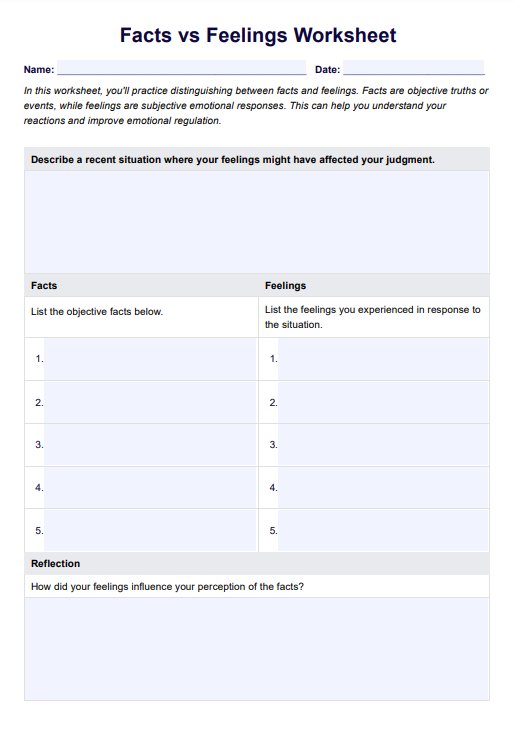Feelings are subjective emotional responses, while facts are objective truths that can be verified or proven. Differentiating between them involves examining the evidence and separating personal emotional experiences from objective reality.

Facts vs Feelings Worksheet
Promote emotional regulation and logical thinking with our Facts vs Feelings Worksheet. Help clients differentiate between facts and feelings in therapy sessions.
Facts vs Feelings Worksheet Template
Commonly asked questions
To separate emotions from facts, identify the emotion you're experiencing, then assess the situation objectively to determine the factual elements. This helps in making rational decisions based on reality rather than emotions.
Both facts and feelings are important. Facts provide a basis for understanding reality, while feelings guide our emotional responses and personal experiences. Balancing the two is crucial for healthy decision-making and well-being.
EHR and practice management software
Get started for free
*No credit card required
Free
$0/usd
Unlimited clients
Telehealth
1GB of storage
Client portal text
Automated billing and online payments











